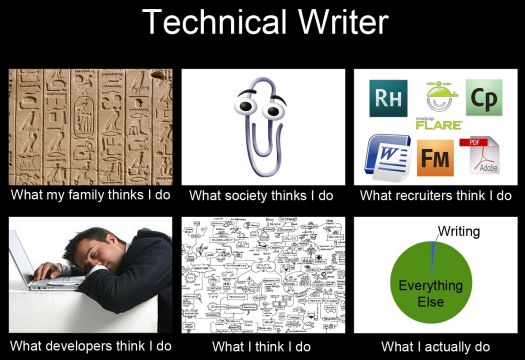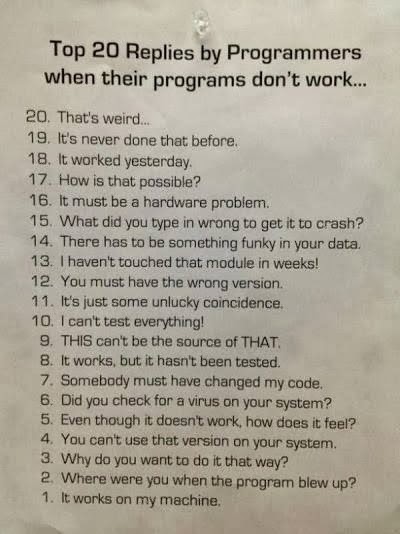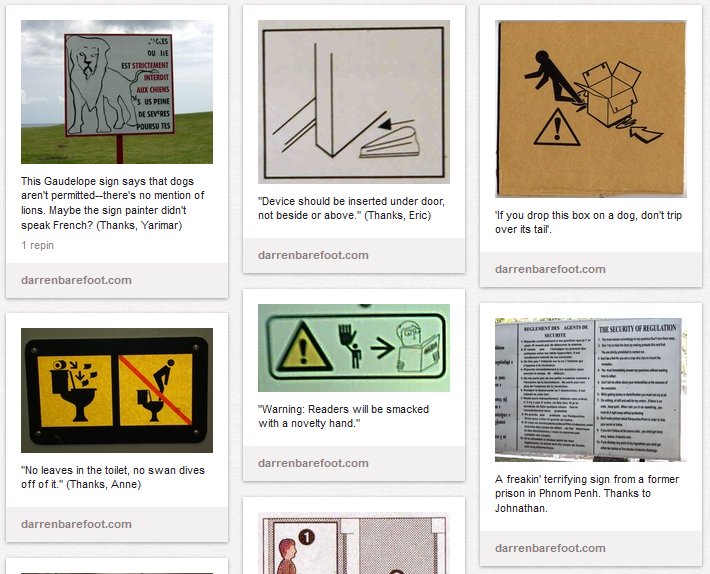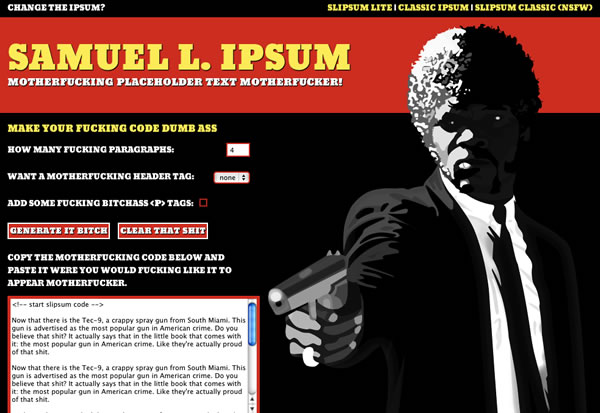There were plenty of irritations with life with Microsoft. I am still astonished how bad PowerPoint is from a design point of view. With these multiples, Microsoft could have hired Louise Fili or Milton Glazer, and the virtual world of the corporation would now be vastly more visual. Actually, because form is content, America would now actually be vastly more conceptual. But, no. The PowerPoint templates were clearly designed by that special someone who did Travelodge napkins and match books in the 1960s. Talk about a difference that makes a difference! Talk about critical path dependency! PowerPoint reproduced Microsoft’s limitations, and helped to install them in the American mind.
Still, PowerPoint was an improvement on the Lotus equivalent. I forget what this was called but it was so utterly unpredictable that I discovered belatedly that presentations would not be forthcoming unless you got a group of people to lay their hands on the printer and chant in Latin. (This was not in the manual, unless it was cunningly secreted there in invisible ink, perhaps on the page that read “this page left deliberately blank.”)
Grant McCracken, “Brands that bind … and when they slide”, This Blog Sits at the, 2005-03-10
March 11, 2021
QotD: Microsoft PowerPoint
February 27, 2021
QotD: What the instructions in Haynes manuals really mean
Haynes: Should remove easily.
Translation: Will be corroded into place … Clamp with adjustable spanner then beat repeatedly with a hammer.Haynes: This is a snug fit.
Translation: You will skin your knuckles! … Clamp with adjustable spanner then beat repeatedly with hammer.Haynes: This is a tight fit.
Translation: Not a hope in hell matey! … Clamp with adjustable spanner then beat repeatedly with hammer.Haynes: As described in Chapter 7 …
Translation: That’ll teach you not to read through before you start, now you are looking at scary photos of the inside of a gearbox.Haynes: Pry …
Translation: Hammer a screwdriver into …Haynes: Undo …
Translation: Go buy a tin of WD40 (industrial size).Haynes: Ease …
Translation: Apply superhuman strength to …Haynes: Retain tiny spring …
Translation: “Crikey what was that, it nearly had my eye out”!Haynes: Press and rotate to remove bulb …
Translation: OK — that’s the glass bit off, now fetch some good pliers to dig out the bayonet part and remaining glass shards.Do it by the book — the real meaning of Haynes instructions.
February 13, 2021
QotD: Haynes guide to tools of the trade
HAMMER: Originally employed as a weapon of war, the hammer is nowadays used as a kind of divining rod to locate expensive parts not far from the object we are trying to hit.
ELECTRIC HAND DRILL: Normally used for spinning steel Pop rivets in their holes until you die of old age, but it also works great for drilling mounting holes just above the brake line that goes to the rear wheel.
PLIERS: Used to round off bolt heads.
HACKSAW: One of a family of cutting tools built on the Ouija board principle. It transforms human energy into a crooked, unpredictable motion, and the more you attempt to influence its course, the more dismal your future becomes.
MOLE-GRIPS/ADJUSTABLE spanner: Used to round off bolt heads. If nothing else is available, they can also be used to transfer intense welding heat to the palm of your hand.
OXYACETELENE TORCH: Used almost entirely for lighting various flammable objects in your garage on fire. Also handy for igniting the grease inside a brake-drum you’re trying to get the bearing race out of.
WHITWORTH SOCKETS: Once used for working on older cars and motorcycles, they are now used mainly for impersonating that 9/16″ or 1/2″ socket you’ve been searching for for the last 15 minutes.
DRILL PRESS: A tall upright machine useful for suddenly snatching flat metal bar stock out of your hands so that it smacks you in the chest and flings your beer across the room, splattering it against that freshly painted part you were drying.
WIRE WHEEL: Cleans rust off old bolts and then throws them somewhere under the workbench with the speed of light. Also removes fingerprint whorls in about the time it takes you to say, “F….”
Do it by the book — the real meaning of Haynes instructions.
July 19, 2020
“Evolved cognition is a kludge – more properly, multiple stacks of kludges – developed under selection to be just barely adequate at coping”
ESR considers the role of programmers who need to document their software, after a brief trip into the kludginess of human cognition:
Maybe you’re one of the tiny minority of programmers that, like me, already enjoys writing documentation and works hard at doing it right. If so,the rest of this essay is not for you and you can skip it.
Otherwise, you might want to re-read (or at least re-skim) Ground-Truth Documents before continuing. Because ground-truth documents are a special case of a more general reason why you might want to try to change your mindset about documentation.
In that earlier essay I used the term “knowledge capture” in passing. This is a term of art from AI; it refers to the process of extracting domain knowledge from the heads of human experts into a form that can be expressed as an algorithm executable by the literalistic logic of a computer.
What I invite you to think about now is how writing documentation for software you are working on can save you pain and effort by (a) capturing knowledge you have but don’t know you have, and (b) eliciting knowledge that you have not yet developed.
Humans, including me and you, are sloppy and analogical thinkers who tend to solve problems by pattern-matching against noisy data first and checking our intuitions with logic after the fact (if we actually get that far). There’s no point in protesting that it shouldn’t be that way, that we should use rigorous logic all the way down, because our brains simply aren’t wired for that. Evolved cognition is a kludge – more properly, multiple stacks of kludges – developed under selection to be just barely adequate at coping.
This kludginess is revealed by, for example, optical illusions. And by the famous 7±2 result about the very limited sized of the human working set. And the various well-documented ways that human beings are extremely bad at statistical reasoning. And in many other ways …
November 2, 2019
QotD: Business writing
For a long time — well, it seemed like a long time — seven or eight years, I taught effective writing seminars to business people. I was young, and I looked even younger. But I had to get up in front of engineers, chemists, lawyers, sometimes accountants, people who were accomplished in their fields but were not necessarily good at writing, and I was supposed to talk to them about how to write reports and letters and memos. And they challenged me because I looked like I was 10 years old, and they expected to be bored also.
[…]
OK, the most consistent mistake … not mistake, but inefficiency of business writing — and it was very consistent — is the absolute refusal on the part of the writer to tell you right away what message he or she is trying to deliver. I used to say to them, “The most important thing you have to say should be in the first sentence.” And “Oh, no, you can’t. I’m an engineer. We did a 10-year study, this is way too complicated.”
And inevitably, they were wrong. Inevitably, if they really thought about it, they were able to, in one sentence, summarize why it was really important. But they refused to do that because the way they found out was by spending 10 years of study and all this data and everything, and that’s the way they wanted everyone to look at what they did. They wanted their supervisors to go plowing through all they had done to come to this brilliant conclusion that they had come to.
COWEN: Through their history, through their thought patterns.
Drag everybody through it. And it was the one thing the newspaper people were taught to do that made more sense. You don’t have your reader’s attention very long, so get to the point. I found it was very difficult to get even really smart businesspeople to get to the point. Sometimes it was because they really couldn’t tell you what the point was.
What I wanted to say, but rarely felt comfortable saying, was, “If you don’t know what the point is, then you can’t really write this report.” But it was always too complicated for a layperson like me to understand. That was the way they did it. I was being hired by their bosses to tell them, “No, we want you to write clearly, and we want you to get to the point.”
COWEN: And why were they, at this meta level, resistant to your message?
Because nobody else was doing it. When I would start the class, I’d have 32 people in the class typically, and when they would turn in all their samples of writing, every one of them wrote the same way. They all wrote business-ese writing. This is my parody of it, but it was, “Enclosed please find the enclosed enclosure.” That kind of formal, nonsensical, meaningless flow of words. Somewhere in there would be something important, something significant, or maybe not.
Dave Barry, interviewed by Tyler Cowan in “Dave Barry on Humor, Writing, and Life as a Florida Man”, Medium, 2017-08-16.
September 15, 2018
QotD: Churchill on brevity
To do our work, we all have to read a mass of papers. Nearly all of them are far too long. This wastes time, while energy has to be spent in looking for the essential points.
I ask my colleagues and their staffs to see to it that their Reports are shorter.
- The aim should be Reports which set out the main points in a series of short, crisp paragraphs.
- If a Report relies on detailed analysis of some complicated factors, or on statistics, these should be set out in an Appendix.
- Often the occasion is best met by submitting not a full-dress Report, but an Aide-mémoire consisting of headings only, which can be expanded orally if needed.
- Let us have an end of such phrases as these: “It is also of importance to bear in mind the following considerations…”, or “Consideration should be given to the possibility of carrying into effect…”. Most of there woolly phrases are mere padding, which can be left out altogether, or replaced by a single word. Let us not shrink from using the short expressive phrase, even if it is conversational.
Reports drawn up on the lines I propose may at first seem rough as compared with the flat surface of officialese jargon. But the saving in time will be great, while the discipline of setting out the real points concisely will prove an aid to clearer thinking.
Winston Churchill, memorandum to the War Cabinet, 1940-08-09.
November 18, 2015
ESR on “Hieratic documentation”
Eric S. Raymond explains how technical documentation can manage the difficult task of being both demonstrably complete and technically correct and yet totally fail to meet the needs of the real audience:
I was using “hieratic” in a sense like this:
hieratic, adj. Of computer documentation, impenetrable because the author never sees outside his own intimate knowledge of the subject and is therefore unable to identify or meet the expository needs of newcomers. It might as well be written in hieroglyphics.
Hieratic documentation can be all of complete, correct, and nearly useless at the same time. I think we need this word to distinguish subtle disasters like the waf book – or most of the NTP documentation before I got at it – from the more obvious disasters of documentation that is incorrect, incomplete, or poorly written simply considered as expository prose.
November 18, 2014
The Wikipedia editors circle the wagons
Virginia Postrel talks about the greatest danger to the long-term health of Wikipedia — the diminishing central group of editors who do the most to keep it going:
Few of the tens of millions of readers who rely on Wikipedia give much thought to where its content comes from or why the site, which is crowdsourced and open (at least in theory) for anyone to edit, doesn’t degenerate into gibberish and graffiti. Like Google or running water, it is simply there. Yet its very existence is something of a miracle. Despite its ocean of content, this vital piece of informational infrastructure is the work of a surprisingly small community of volunteers. Only about 3,000 editors contribute more than 100 changes a month to the English-language Wikipedia, down from a high of more than 4,700 in early 2007. Without any central direction or outside recognition, these dedicated amateurs create, refine, and maintain millions of content pages.
But they don’t really do it for you. Wikipedia “is operated by and for the benefit of the editors,” writes Richard Jensen, one of their number, in a 2012 article in the Journal of Military History. (Jensen, a retired history professor, is a credentialed scholar, which makes him unusual among Wikipedia’s editors.) Unlike open-source software contributions, working on Wikipedia provides few career advantages. It’s a hobby, offering a combination of intrinsic and social rewards. People edit Wikipedia because they enjoy it.
And that is both the genius and the vulnerability of the organization. Wikipedia’s continued improvement — indeed, its continued existence — depends on this self-selected group of obsessives and the organizational culture they’ve developed over time. But the open structure that enabled the creation of so many entries on so many topics also attracts a never-ending stream of attacks from outright vandals and other bad actors. Forced to defend the site’s integrity, incumbent editors become skeptical, even hostile, toward the newcomers who could ensure its future. If Wikipedia eventually fades away, the reasons will lie in a culture that worked brilliantly until it devolved from dynamism to sclerosis.
June 12, 2014
Winnipeg Grade 9 students successfully hack Bank of Montreal ATM
“Hack” is the wrong word here, as it implies they did something highly technical and unusual. What they did was to use the formal documentation for the ATM and demonstrate that the installer had failed to change the default administrator password:
Matthew Hewlett and Caleb Turon, both Grade 9 students, found an old ATM operators manual online that showed how to get into the machine’s operator mode. On Wednesday over their lunch hour, they went to the BMO’s ATM at the Safeway on Grant Avenue to see if they could get into the system.
“We thought it would be fun to try it, but we were not expecting it to work,” Hewlett said. “When it did, it asked for a password.”
Hewlett and Turon were even more shocked when their first random guess at the six-digit password worked. They used a common default password. The boys then immediately went to the BMO Charleswood Centre branch on Grant Avenue to notify them.
When they told staff about a security problem with an ATM, they assumed one of their PIN numbers had been stolen, Hewlett said.
“I said: ‘No, no, no. We hacked your ATM. We got into the operator mode,'” Hewlett said.
“He said that wasn’t really possible and we don’t have any proof that we did it.
“I asked them: ‘Is it all right for us to get proof?’
“He said: ‘Yeah, sure, but you’ll never be able to get anything out of it.’
“So we both went back to the ATM and I got into the operator mode again. Then I started printing off documentation like how much money is currently in the machine, how many withdrawals have happened that day, how much it’s made off surcharges.
“Then I found a way to change the surcharge amount, so I changed the surcharge amount to one cent.”
As further proof, Hewlett playfully changed the ATM’s greeting from “Welcome to the BMO ATM” to “Go away. This ATM has been hacked.”
They returned to BMO with six printed documents. This time, staff took them seriously.
A lot of hardware is shipped with certain default security arrangements (known admin accounts with pre-set passwords, for example), and it’s part of the normal installation/configuration process to change them. A lazy installer may skip this, leaving the system open to inquisitive teens or more technically adept criminals. These two students were probably lucky not to be scapegoated by the bank’s security officers.
December 11, 2013
I’ve heard all of these responses many, many times
December 9, 2013
November 21, 2012
The Hall of Technical Documentation Weirdness returns
Darren Barefoot has revived the Hall of Technical Documentation Weirdness as a Pinterest site:
August 24, 2011
Replacing “Lorem Ipsum”
You’ve probably encountered bits of Latin placeholder text on web pages, generally known as “Lorem Ipsum”, from the first words of the original. If you’re looking for something a bit edgier, you might try Samuel L. Ipsum instead:
Of course, I wouldn’t recommend actually using this unless you’re doing work for customers who wouldn’t be offended when it — inevitably — slips past the design phase and shows up in the finished product.
August 18, 2011
This is so true
By way of Cory Doctorow’s post at BoingBoing, the wonderfully accurate Muphry’s Law:
Muphry’s Law is the editorial application of the better-known Murphy’s Law. Muphry’s Law dictates that:
- if you write anything criticising editing or proofreading, there will be a fault in what you have written;
- if an author thanks you in a book for your editing or proofreading, there will be mistakes in the book;
- the stronger the sentiment in (a) and (b), the greater the fault; and
- any book devoted to editing or style will be internally inconsistent.
Muphry’s Law also dictates that, if a mistake is as plain as the nose on your face, everyone can see it but you. Your readers will always notice errors in a title, in headings, in the first paragraph of anything, and in the top lines of a new page. These are the very places where authors, editors and proofreaders are most likely to make mistakes.
It always pays to allow for Muphry in anything you write, or anything you are checking.
June 26, 2011
Product warnings
Many weird and whacky warnings get attached to products as a result of product liability concerns, but some of them must be generated without legal prompting:
Warning #2: Booze Blues
Seen on a Terrestrial Digital outdoor antenna: “Do not attempt to install if drunk, pregnant, or both.”
Of course, if you’re drunk and pregnant, you probably have bigger problems.
Warning #3: Three-Dimensional Danger
Seen on a Samsung 3D TV disclaimer: “Pregnant women, the elderly, sufferers of serious medical conditions, those who are sleep deprived or under the influence of alcohol should avoid utilizing the unit’s 3D functionality.”
Man, those drunk moms-to-be just can’t catch a break!
Warning #4: Options, Options
Seen on a computer software package: “Optional modem required.”
The writer’s mandatory English language class, incidentally, was not completed.







